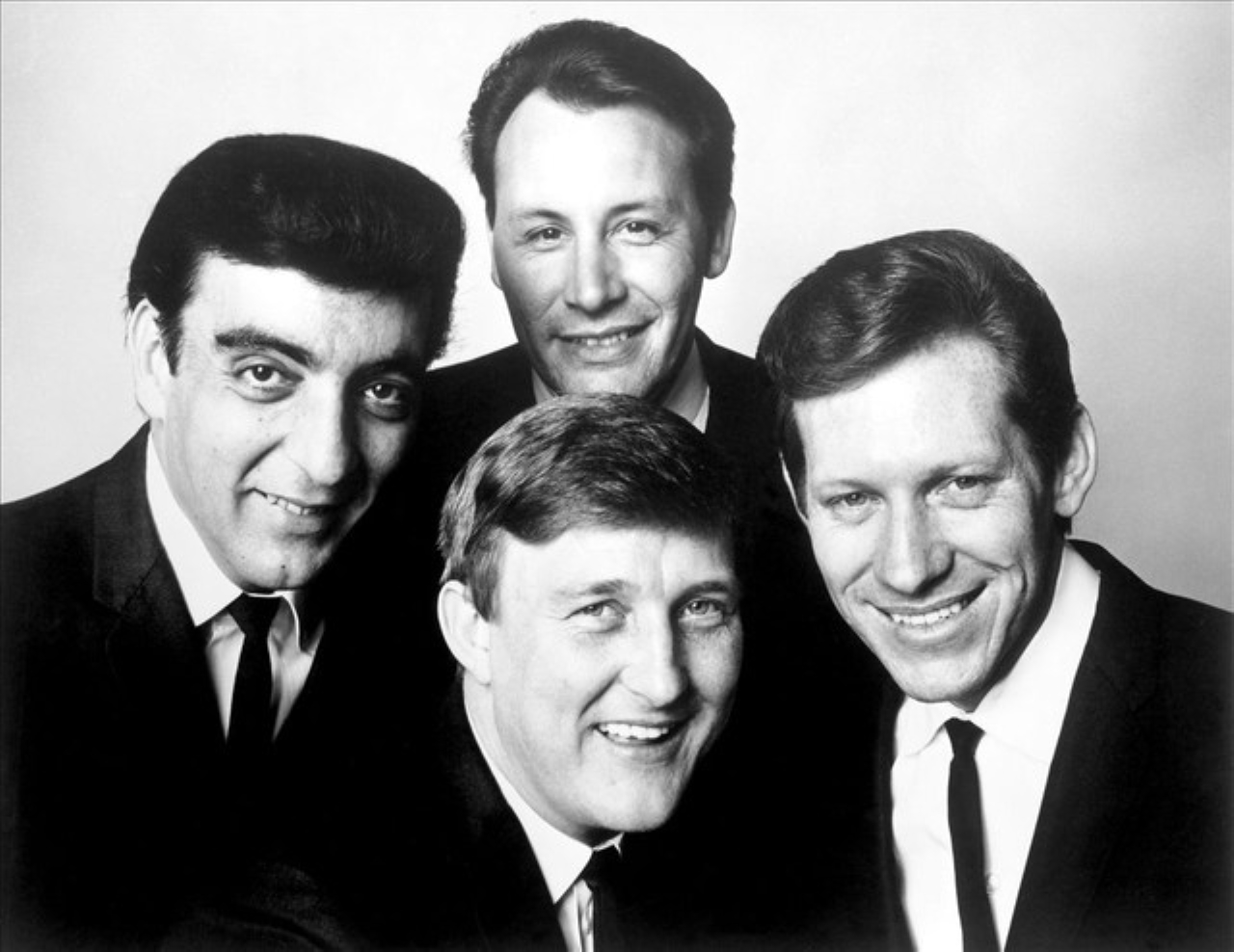🌟 Humble Beginnings in Tacoma
In the spring of 1958, in the blue-collar town of Tacoma, Washington, two young men were quietly building something that even they didn’t fully understand yet. Don Wilson sold used cars during the day and spent his nights strumming a rhythm guitar in his parents’ basement. Bob Bogle poured concrete for a construction company, but every spare minute was devoted to practicing guitar licks he memorized from his favorite records.
They didn’t have a singer. They didn’t have original songs. All they had was a shared dream, a couple of second-hand guitars and the genuine thrill of playing music together. In small clubs across the Pacific Northwest, they played whatever instrumentals they could learn: Chet Atkins, Duane Eddy, The Fireballs. They called themselves The Versatones, then The Impacts, and finally landed on a name that sounded adventurous: The Ventures.
Every weekend they hauled their amps into smoky dancehalls, setting up behind jukeboxes and trying to win over crowds who didn’t know (or care) who they were. It wasn’t glamorous. But somewhere in those long sweaty sets, the sound began to take shape — raw, melodic and unapologetically instrumental.

⚡ A Song That Was Never Supposed to Be a Hit
In early 1959, Bob and Don stumbled across a jazz composition called Walk, Don’t Run by guitarist Johnny Smith. It wasn’t a hit, but there was something about its chord progression that felt special. They re-worked it with a faster tempo and a harder edge. Suddenly, this gentle jazz tune turned into an electrifying three-minute track made for teenagers and transistor radios.
The problem? No record label wanted it. “Instrumental bands don’t sell,” one A&R executive told them. So Bob and Don decided to finance the recording themselves. They rented a tiny studio in Seattle, paid $65 for the session, and recorded their version in just a few takes. There was no budget for retakes or fancy overdubs. What you hear on that first record is exactly what happened in that little studio — mistakes, imperfections and all.
They pressed 500 vinyl singles under their own label, Blue Horizon Records, then personally delivered them to small record stores around Washington. Most shop owners shrugged and put them at the bottom of the pile. But one DJ at KJR in Seattle decided to play it during his late-night shift. The response was immediate.
Phones lit up. Teenagers called in asking, “What was that guitar record you just played?”
🚀 The Explosion
Within weeks the song spread from Seattle to Portland, then to Los Angeles and San Francisco. DJs couldn’t get enough of it. By August 1960, Walk, Don’t Run had climbed into the Top 10 of the Billboard Hot 100 — an almost impossible feat for an entirely instrumental track by an unsigned band.
Suddenly The Ventures were appearing on national TV shows like American Bandstand. Bob and Don, who had been pouring concrete and selling used cars only months earlier, were standing under bright studio lights playing to millions of viewers. Girls screamed. Record labels finally called back — this time offering record deals.
Watching the charts that summer, one critic famously wrote:
“Rock music finally has its own language — and it doesn’t even need words.”
🌊 Defining the Sound of the Surf Era
The early ’60s were the golden years of American youth culture. Surfing, hot rods, beach parties — all of it needed a soundtrack. Walk, Don’t Run provided the blueprint. The reverb-heavy guitar tone, the tight rhythm section, the clean melody… it became the sound of an entire generation.
While other bands still relied on vocal hooks, The Ventures communicated purely through guitar arrangements. Mel Taylor (who joined in 1963) brought thunder to the drums. Nokie Edwards’ lead guitar work cut like a knife. Bob Bogle and Don Wilson held everything together with raw, propulsive rhythm parts that were deceptively simple but absolutely essential.
In 1964, The Beatles invaded America. Most early rock bands vanished practically overnight. The Ventures didn’t. Why? Because their style wasn’t tied to lyrics, trends or personas. It was pure sound — and pure sound doesn’t go out of style.
🌏 When the World Started Listening
After Walk, Don’t Run, the world opened its doors. The Ventures toured relentlessly — Hawaii, Australia, Germany, England. But no country embraced them more passionately than Japan. In 1965, when the band landed at Haneda Airport, they were greeted by thousands of screaming fans. The instrumental language had crossed oceans and abolished cultural barriers.
Japanese guitarists copied every note. Music students treated their records like textbooks. Even today in Japan, The Ventures’ version of Walk, Don’t Run is still used in school band programs — a rite of passage for young musicians learning how to keep time, play in harmony and feel the groove.
One Japanese fan once said, “We couldn’t understand the words in American rock songs. But The Ventures used the language of emotions. We understood everything.”
🔥 Legacy of a Three-Minute Masterpiece
More than six decades after its release, Walk, Don’t Run remains one of the most iconic instrumental tracks in music history. It paved the way for guitar-based rock, inspired everyone from George Harrison to Stevie Ray Vaughan, and proved that a band didn’t need a charismatic frontman to change the world — only a sound that connected.
The Ventures went on to release over 65 studio albums, sell more than 100 million records, and tour across five continents. But everything — every sold-out show, every Japanese fan screaming in a stadium, every young guitarist learning their first chord — started with that $65 recording in a small studio in Seattle.
In the end, Walk, Don’t Run isn’t just an instrumental hit. It’s a reminder that even the simplest idea, born in a basement by people who refuse to quit, can change the course of musical history.
Video